A Day on the Dial in Cap Haïtien, Haiti

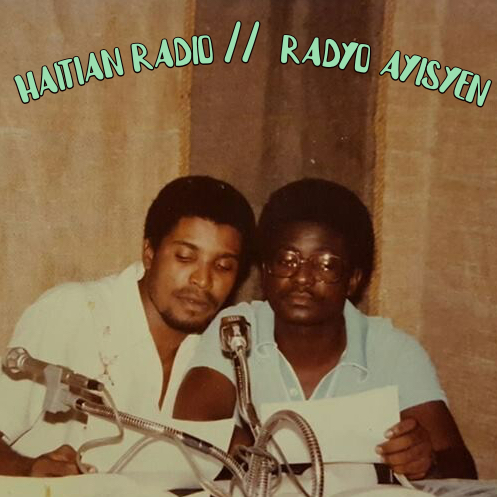
Radyo Ayisyen
Learning from other scholars’ work on Haitian radio was, and still is, one of the greatest pleasures in the process of writing Isles of Noise: Sonic Media in the Caribbean (UNC 2016). People living in or from Haiti widely acknowledged and almost took for granted radio’s outsized role in public and political life. Edwidge Danticat and Jonathan Demme also understood this and paid tribute in Claire of the Sea Light and The Agronomist respectively, but historians remained largely fixated, understandably, on pivotal moments in Haiti’s rich history. Radio is different. Not pivotal, but witnessing the pivotal. Less dramatic and more long lasting and adhering to the same format for days, years, decades. It speaks to people who wouldn’t read newspapers or books. It floods private and public space with the sounds of music, talking, ruling, dissenting, explaining, satirizing, creating, crying, testifying, lying. But it leaves few archival traces. This is why the work of the five scholars in this series is so important. They allow us to hear a little and honor the listeners who make the medium what it is.
Liveness, and company: Ian Coss’s finely tuned account of a “day in the life” of a radio station follows the programming rhythm of days and nights, from rollicking to quiet and back again. Radio is a predictable presence, an intimate friend who anticipates your needs even before you do. Coss draws from his years of listening to the listeners as he marks radio time and space in Cap Haïtien. Guest Editor– Alejandra Bronfman
——-
Fabrice Joseph is a mender, set up on a street corner in Cap Haïtien, Haiti’s second largest city. He shows me a red plastic toolbox filled with supplies — thread, wires, scraps of fabric—which he can use to fix a jammed zipper or stitch up a torn backpack strap. I stop because he’s cradling a radio set in his hands, tuned to the city’s most popular station: Radio Venus.
We meet on a quiet day; Fabrice has been sitting on the stoop for five hours already with no work. Another day he’s engrossed in assembling a large umbrella—the kind food vendors use for shade—but the radio is still on, now propped on a ledge just behind his head. He replaces the batteries almost weekly, because the radio is always on. In the morning Radio Venus plays news, Fabrice tells me, followed by music as the day heats up. Then in the afternoon he’ll hear sports or perhaps a religious program, before the station returns to music in the evening.
This arc Fabrice describes is designed to follow the arc of his day. In this post, I trace that link: between the rhythms of radio programming and the rhythms of daily life, to show how formatting choices create a heightened sense of ‘liveness’ on Haiti’s airwaves, with all content located in a specific moment: the present moment.

In a technical sense, terrestrial radio broadcasting has always been defined by real time or ‘live’ transmission (an dirèk in Creole), a characteristic that is often invoked in discussions of the medium’s capacity to create shared experiences or even ‘imagined communities.’ And yet where I live in the United States, the passage of time is barely discernible on most commercial stations. Where radio schedules once varied from hour to hour (often reflecting gendered and classed norms of listening), today market research has driven the rise of so-called “format stations” that target specific interest groups and demographics with an equally targeted form of programming: non-stop sports, news, top 40, easy listening, etc.
When I first visited Haiti in 2015, I was surprised to find a radio format unlike any I had grown up with, and not unlike those broadcast schedules of the 1920s and 1930s. While doing research in Cap Haïtien, I conducted a series of bandscans—systematic reviews of the entire radio dial—in order to identify the different types of programming heard on stations throughout the day there. I found the full range of talk and music-oriented shows you might expect, and yet of the 31 stations I picked up, only a handful carried the same type of programming all day. The vast majority carried every kind of program, including Fabrice’s favorite station, Radio Venus.
The Radio Venus studio sits on top of a three-story building, with a door leading straight out onto an open roof deck where the transmitter tower rises several more stories up in the air. That tower operates at 10 watts, just enough to relay the signal to a nearby mountain, where it’s then rebroadcast at roughly 450 watts, blanketing the country’s whole Northern Department. The person in charge of this whole system, as well as the overall flow of the day’s programs, is known as the opérateur. The station employs four operators—Molliere, Louis, Wilkonson and Simon—who work in shifts to cover the 24-hour schedule. This rotation provides stability as the hosts (or animateur) of different programs come and go—often showing up late, and sometimes not showing up at all. For long stretches of the day there is no host, so the operator just cues up a folder of songs in Windows Media Player, occasionally leaning over to trigger a station ID: a chesty voice that declares, “W’ap koute Radio Tele-Venus”—‘You are listening to Radio Tele-Venus.’

One day, while sitting behind the board of the cramped control room, Simon explains that the goal of the station’s format is to satisfy all of the listeners’ interests and to provide “stability” in their often unstable lives. That last descriptor, “estabilite,” strikes me as somewhat ironic, given that the station’s programming is constantly changing. But for Haitians like Fabrice, who listen all day while they work, the description fits: he never needs to touch the dial, and at the same time he knows exactly what he will hear. Indeed, most of the radio listeners I meet in Cap Haïtien praise the medium’s consistently variable nature; if they wanted to hear the same thing all day they could get a stereo that takes a kat memwa—a memory card—and load it up with their favorite mp3s. Radio should change with the hours of the day; that’s part of what makes it radio.
Many of the staff at Radio Venus describe the art of matching programming to the mood of the moment, in terms of ‘hotness’ (cho). For example, it’s important to have a lively host on the air between about 10am to noon, usually playing konpa music, so that the radio ‘heats up’ to give listeners more energy for their day. This shift takes place simultaneously across virtually every station on the dial, such that it’s literally audible on the street, from countless battery-powered radio sets. The timeliness of this ‘heating up’ is further emphasized by the host—at Venus, a local favorite named Don Lolo—who constantly reads the exact hour and minute off of a large analog clock on the studio wall. Lolo’s job is to make the music live in the moment; to make it ‘hot.’ By the same token, when I interview the overnight operator, Louis, he tells me that since many listeners keep the radio on all night, it’s important that he doesn’t play any music that’s ‘too hot,’ so as not to disturb their sleep. Everything in its right time.
The most dramatic shift in programming, however, begins on Friday evening. For the entire weekend, the station drops most of its talk-oriented shows and plays constant music—almost all of which is bootlegged recordings of live concerts. The idea is to convey the freewheeling mood of a night out on the town, even for those who won’t be at a bar or concert. To keep up this atmosphere, the station operators can choose from whole folders of “konpa live” tracks dating back decades—most of which run twelve to fifteen minutes long. Again, this programming convention of playing live recordings on weekends is ubiquitous across the dial, and indeed across Haiti. Turn on the radio on a Saturday night and you will be hard pressed to find any music that was recorded in a studio.

My first weekend at Radio Venus, I step out of the studio at dusk, and find the station’s signal is suddenly all around me—far more present than just a few hours earlier. Around the corner from the station, an electronics store has set up a row of folding chairs in the street, and is blasting Radio Venus for a small audience. At the end of the same block is a barbershop; there too the stereo is tuned to Venus, with one cabinet speaker set in its arched entryway.
At this hour, both the street and the shop are definitively male spaces—save for some market women packing goods and a mother overseeing her son’s haircut, those listening in public are men. A cell card vendor is perched on top of the stereo speaker itself; a man with two live chickens—their heads poking out of the bottom of plastic shopping bags—stops by and quickly exchanges some money with one of the barbers, who plays some air guitar as the next customer takes his seat. One of the other remaining barbers is perched sideways in his stool, feet in the air and a bottle of Barbancourt rum in one hand. The energy is loose, encouraged by the radio announcer.
Back at the station, the small studio is lit only by a single fluorescent bulb, whose harsh light spills through the glass pane into the neighboring control room. Don Lolo is on the air once again, but his style is different. No more telling the time or giving long monologues. Instead he sings along in a full-throated voice, occasionally adding personal shout-outs. We learn that Gerald is celebrating a birthday today, just as Claire and Alex are marking their anniversary. When his phone then rings, instead of picking it up Lolo silences the call and responds by radio: “Sorry, I can’t talk now!”
It’s late when Don Lolo wraps up his show and we head out of the studio, leaving Louis alone to cool the music back down for the overnight shift. The evening operator, Simon, offers to walk me home. At this hour, we can stroll down the middle of the street side by side, the city’s elaborate facades cast in silhouette by the occasional streetlight. As we head up the hill towards my place, Simon cocks his head and gestures across the street. I turn just in time to catch the station ID—“W’ap koute Radio Tele Venus”—coming out of a barbershop. The radio is still on.
Tune into a livestream of Radio Tele-Venus via Tune In: https://tunein.com/radio/Radio-Tele-Venus-1043-s181945/
—
Featured Image: “An electronics vendor in Cap Haïtien, Haiti” by Ian Coss
—
Ian Coss is an audio producer, composer and sound designer whose work spans the worlds of podcasting and performance. He has produced several critically acclaimed series with the Radiotopia network, including Ways of Hearing, The Great God of Depression, and Over the Road. His audio work has been reviewed by the New Yorker and the Guardian; featured on NPR, Al Jazeera and the BBC; and recognized with an Edward R. Murrow Award for ‘excellence in sound.’ Additionally, Ian has premiered live sound works at the Boston Museum of Science and Harvard University, and collaborated on immersive audio tours for the Isabella Stewart Gardner Museum, Richmond ICA, and other major art institutions. Ian holds a PhD in ethnomusicology from Boston University, where he conducted research on Haitian radio broadcasting and Indonesian shadow-puppetry. He continues this work as musical director for The Brothers Čampur, an international puppetry collaborative that has performed at major festivals in Indonesia, and at universities throughout the eastern United States. More on all these projects at iancoss.com.
—
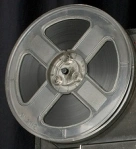
REWIND! . . .If you liked this post, you may also dig:
Radio de Acción: Violent Circuits, Contentious Voices: Caribbean Radio Histories–Alejandra Bronfman
Radio Ambulante: A Radio that Listens –Carolina Guerrero
The Sweet Sounds of Havana: Space, Listening, and the Making of Sonic Citizenship–Vincent Andrisani
“Sound Studies: A Discipline?”: Sound Signatures Winter School, Amsterdam, January 2014
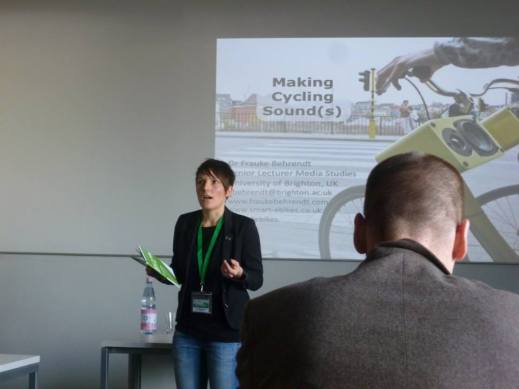
Has the ever-nascent field of sound studies finally “grown up”? After years of intellectual development and a constantly growing body of work, including quite a few classic texts and books, it has been rapidly establishing an identity of its own, independent from the many “parent” disciplines from which it originated. As with any teenager, this process of maturation comes with a dose of self-searching and, indeed, some navel-gazing. But are we ready to acknowledge sound studies as its own discipline?
At the first conference of the European Sound Studies Organization (ESSA) in Berlin in October 2013, a heated debate followed an otherwise routine announcement. The preliminary title for the second installment of the conference: “Sound Studies: A Discipline?” was not going to make it to Copenhagen in June 2014. Although the question mark suggested playfulness, many audience members either did not like the idea of an entire conference devoted to the meta-discussion on the pros and cons of interdisciplinarity or were not prepared to consider sound studies as a discipline at the first place.
Eventually, the Copenhagen conference was safely re-named “Sound Studies: Mapping the Field.” The discussion in Berlin however, continued at the opening session of the Sound Signatures Winter School in Amsterdam in early 2014. Co-organizer Mara Mills asked whether the publication of such anthologies as The Sound Studies Reader in 2012 and The Oxford Handbook of Sound Studies in 2013 meant that sound studies was a proper discipline. Is it, she asked, moving away from its roots as an interdisciplinary field consisting of displaced scholars formerly unable to tackle questions of sound within the confines of their traditional disciplines? The ensuing five days of the Winter School answered Mill’s question in a rather fittingly ambiguous way. The question remains: “Sound Studies: A Discipline?” Well, yes and no.

Hearing, public domain
One of the most significant conclusions of the Winter School’s thought-provoking workshops, keynotes, performances and debates was phrased by co-organizer Carolyn Birdsall during the final discussion on Friday afternoon; she had come to realize that sound studies and its older, more distinguished, but often somewhat stale brother musicology are not the adversaries one is often led to believe. A musicologist by training, I have always found sound studies’ habit of explicitly not dealing with music (in conjunction with its sometimes disproportionate focus on sound art) a little tiresome; and what these five intensive days in Amsterdam convincingly showed, among other things, was that the older brother and its younger sibling can be rather complimentary.
Of course, the traditional objects and methods of the discipline of musicology—in its most dusty and clichéd form studying black dots written on paper by great men—have long been what sound studies scholars avoided. In the late 1980’s, however, musicology already started moving away from this stereotype by incorporating more critical methodologies and broadening its scope. Moreover, ethno- or cultural- musicologists have been breaking the armor of Eurocentrism in mainstream musicology. Now, with the steady rise of sound studies’ academic momentum, musicology is even giving up its intellectual monopoly on determining what does and what does not count as relevant research on music. The highly interdisciplinary body of knowledge developed in this mature sound studies can indeed be very useful in more conventional musicological research; likewise sound studies benefits from work conducted within the disciplinary confines of musicology.
At the Winter School, a prime example of such an exchange was Julia Kursell’s keynote lecture “Motor Media: On Aural Feedback in the History of Musical Instrument Playing.” Focusing on the experiments of nineteenth-century French pianist and teacher Marie Jaëll, Kursell showed how, prior to the advent of recording technology, musical instruments like the piano offered valuable points of entry into the world of sound and hearing. The piano-keyboard, Kursell argued, was not just a site of aesthetic, musical development, but was also employed as an epistemological tool in itself. Moreover, studying such historical cases also opens the door for broader questions engaging musicology, sound studies and science and technology studies.This interdisciplinary overlap allows for discussions of the body politics of music teaching as well as the didactics of a specific aesthetic regime in a particular social milieu.
Other sessions that explicitly dealt with music included Stephen Amico’s lecture combining sound studies, media studies and the “discipline formerly known as ethnomusicology” to discuss ethical difficulties facing ethnographic sound archivists. This discussion about the ownership and right of use of the recordings in such archives was among the most refreshing and timely raised through the week. On a much lighter note, Ashley Burgoyne’s Workshop “What Can You Learn from a Music Game?” represented yet another rapidly developing interdisciplinary field of music research: the study of music cognition.
Recently, after returning from the aforementioned ESSA conference in Copenhagen, Marcel Cobussen predicted in a Facebook update that “in 10-15 years from now, musicology will be a subspecies of sound studies.” He might be right, but rather than a “sub-discipline,” why not envision a continuum from “old-fashioned” musicology, via the much broader field of music studies towards the broader field of sound studies. As such, sound studies would maintain its interdisciplinary status as a field, rather than a discipline, allowing for engagement with the knowledge that has been produced and is still produced in musicology proper and music studies more generally.
It is up to a new generation, raised as sound studies natives, to further the developments toward such an exchange of scholarship. Judging by the presentations, workshops, performances, and most tellingly, student presentations, during these five days in Amsterdam, this will undoubtedly happen. Notwithstanding the very broad scope of topics and approaches, backgrounds and interests, among participants and presenters there was the tacit acknowledgement of communality in the one thing they all shared: a profound interest in sound in the broadest sense of the word that needed very little justification. Initiatives like this Winter School and its upcoming second installment in the form of a Summer School in Berlin leave one with an optimistic outset of the intellectual potential of the young field of sound studies; it forges interdisciplinary connections by virtue of the common interest in an object–sound–that is simultaneously a very specific and seemingly endless scope of scholarly possibilities.
Perhaps the most telling example of this bright future was the fact that the keynote by Jonathan Sterne, without question the week’s big star, author of one of the founding books in the field, was a nice historical overview of the concept of the “soundscape,” although offering few new insights or questions. If anything, this unusually low-key performance from a very impressive scholar, underlined the most inspiring aspect of the Sound Signatures Winter School: there is still much to be done, and, as this very blog has been consistently showing since 2009, a new generation of sound scholars is already doing it. Therefore, I am looking forward to hearing our next generation of scholars weighing in on the question: “Sound Studies: A Discipline?” in the forthcoming discussion in Berlin. With an impressive, diverse and exciting program I’m sure I won’t be disappointed.
—
Melle Jan Kromhout is PhD-Fellow at the Amsterdam School for Cultural Analysis, University of Amsterdam. His research project entitled “Noise Identities” focuses on the revaluation of noise in recorded sound and music. The project aims to develop noise identities as a concept for assessing the relation between recording media and musical significance. He presented his work at conferences around the globe and published several articles including “‘Over the Ruined Factory There’s a Funny Noise’: Throbbing Gristle and the mediatized roots of noise in/as music” (2011), “As Distant and Close as Can Be. Lo-fi Recording: Site-specificity and (In)authenticity” (2012), “An Exceptional Purity of Sound: Noise Reduction Technology and the Inevitable Noise of Sound Recording” (2014) and “’Antennas Have Long Since Invaded Our Brains’: Listening to the ‘Other Music’ in Friedrich Kittler” (forthcoming, 2015). More information on www.mellekromhout.nl
—
Featured image: Carla Müller-Schulzke opening the first ESSA conference in Berlin, October 2013, by Jennifer Stoever, CC BY-SA 3.0
—
 REWIND! . . .If you liked this post, you may also dig:
REWIND! . . .If you liked this post, you may also dig:
Functional Sound (Studies): The First European Sound Studies Association Meeting— Erik Granly Jensen
“Once the word ‘sound’ was in the title, it opened up a kind of door”: A Conversation with Eric Weisbard— Liana Silva-Ford
“Sound at AMS/SEM/SMT 2012”— Bill Bahng Boyer









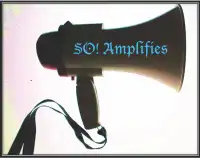
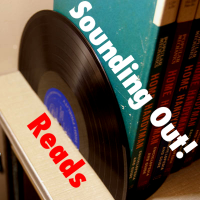





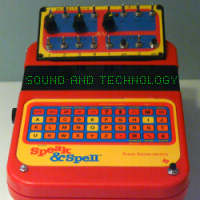


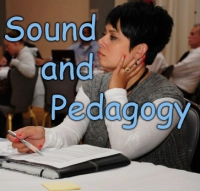

Recent Comments